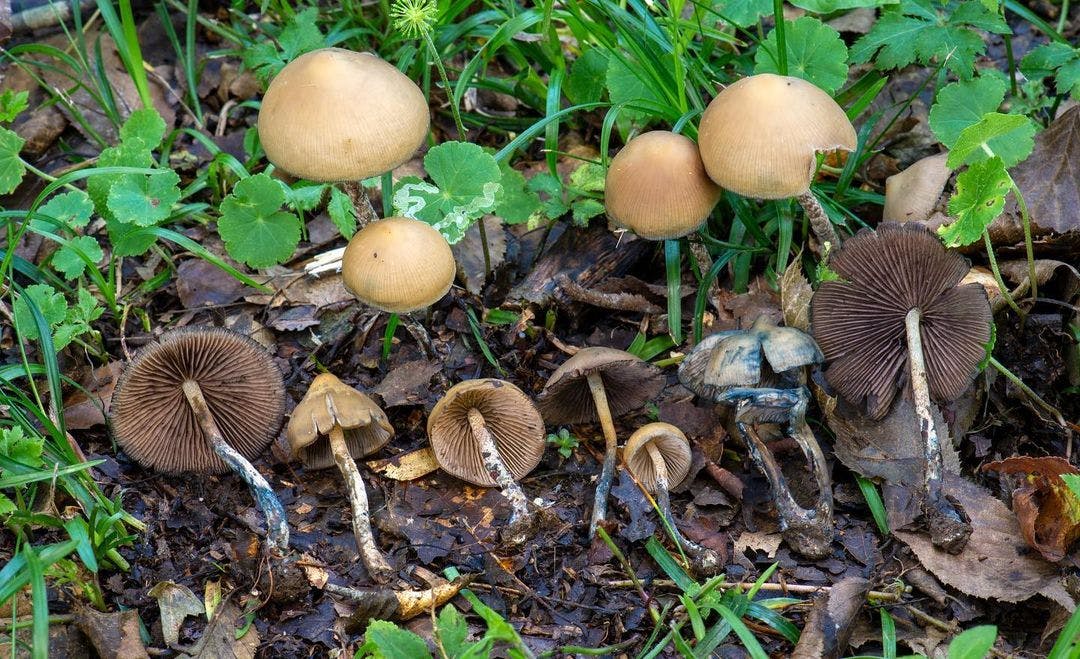The Sacred Journey: A Brief History of Psychedelic Mushroom Use in Oaxaca, Mexico
Written by the Mogu Research Team. Published on 2024-08-31.Introduction
Oaxaca, Mexico, is a region steeped in cultural heritage, where indigenous traditions have been preserved for centuries. Among these traditions is the ritualistic use of psychedelic mushrooms, particularly those of the genus Psilocybe. These mushrooms have long been revered by the indigenous peoples of Oaxaca—such as the Mazatec, Mixtec, and Zapotec—for their powerful psychoactive properties. They have played a crucial role in spiritual, healing, and religious practices for generations.
 Psilocybe zapotecorum photographed by Alan Rockefeller. Sep 23, 2022.
Psilocybe zapotecorum photographed by Alan Rockefeller. Sep 23, 2022.Ancient Roots and Spiritual Significance
The use of psychedelic mushrooms in Oaxaca dates back thousands of years. Indigenous communities referred to these mushrooms as "teonanácatl," meaning "flesh of the gods," and considered them sacred. The mushrooms were central to various ceremonies, serving as a means to communicate with the divine, seek spiritual guidance, and heal both physical and mental ailments.
Shamans, known as curanderos or curanderas, played a vital role in these practices, using the mushrooms to diagnose and treat illnesses. The visions induced by the mushrooms were interpreted as messages from spiritual entities, offering guidance during significant life events and communal challenges.
Colonization and Cultural Resilience
The arrival of Spanish colonizers in the 16th century marked a turning point for the indigenous practices in Oaxaca. The Spanish, driven by their Christian beliefs, condemned the use of psychedelic mushrooms as pagan and sought to eradicate them. The Catholic Church labeled these practices as heretical, leading to the persecution of those who continued to use the mushrooms in their rituals.
Despite this repression, indigenous communities in Oaxaca secretly preserved their traditions. Knowledge of the mushrooms and their sacred uses was passed down orally, ensuring that these practices survived the colonial era, albeit in a diminished and clandestine form.
20th Century Rediscovery
In the 1950s, the use of psychedelic mushrooms in Oaxaca was rediscovered by the outside world, largely through the efforts of R. Gordon Wasson, an American banker and amateur mycologist. Wasson and his wife Valentina participated in a traditional Mazatec mushroom ceremony, an experience Wasson later chronicled in Life magazine. This article brought global attention to the use of psychedelic mushrooms in Oaxaca, sparking widespread interest in the West.
Wasson’s work, along with research by scientists like Albert Hofmann, who isolated and synthesized psilocybin (the active compound in these mushrooms), helped bridge indigenous knowledge with modern science. However, the attention also led to a surge of outsiders seeking psychedelic experiences in Oaxaca during the 1960s, creating tensions with local communities.
Modern Retreat Centers and Psychedelic Therapy
In recent years, Oaxaca has seen the emergence of modern retreat centers offering guided psychedelic therapy using these traditional mushrooms. These centers combine indigenous wisdom with contemporary therapeutic practices, providing a structured environment where participants can explore the healing potential of psilocybin under the supervision of trained facilitators.
These retreats often incorporate elements of the traditional Mazatec ceremonies, including chanting, meditation, and a focus on spiritual insight. The growing interest in such retreats is part of a broader movement that recognizes the therapeutic benefits of psychedelics, particularly for mental health conditions like depression, anxiety, and PTSD. Oaxaca’s retreat centers have become a destination for those seeking not just a psychedelic experience, but a transformative journey rooted in ancient traditions.
Contemporary Practices and Scientific Exploration
Psychedelic mushrooms remain an integral part of indigenous culture in Oaxaca. Healers continue to use them in sacred ceremonies, blending ancient traditions with modern therapeutic practices. These ceremonies are protected under Mexican law, which allows the use of traditional entheogens in indigenous religious contexts.
The resurgence of scientific interest in psychedelic mushrooms, particularly for treating mental health conditions, has brought these substances into the mainstream. Yet, it is the indigenous communities of Oaxaca who continue to be the true custodians of this ancient practice, preserving a tradition that offers profound insights into the spiritual and healing potential of these mushrooms.
Conclusion
The history of psychedelic mushroom use in Oaxaca is a story of spiritual depth, resilience, and cultural preservation. From their ancient role as sacred tools for divine communication to their modern-day applications in therapy, these mushrooms have been central to the cultural and spiritual identity of the region. As global interest in psychedelics grows, it is essential to honor and respect the traditions that have kept this knowledge alive for centuries.
References
Wasson, R. Gordon. "Seeking the Magic Mushroom." Life Magazine, May 13, 1957.
Schultes, Richard Evans, and Albert Hofmann. Plants of the Gods: Their Sacred, Healing, and Hallucinogenic Powers. Rochester, VT: Healing Arts Press, 1992.
Díaz, José Luis. "Ethnopharmacology of Sacred Psychoactive Plants Used by the Indigenous Peoples of Mexico." Annual Review of Pharmacology and Toxicology, vol. 33, no. 1, 1993, pp. 619-636.
Guzmán, Gastón. "The Genus Psilocybe: A Systematic Revision of the Known Species Including the History, Distribution, and Chemistry of the Hallucinogenic Species." Nova Hedwigia, vol. 74, 2002, pp. 1-350.
Hofmann, Albert. LSD: My Problem Child. New York: McGraw-Hill, 1980.